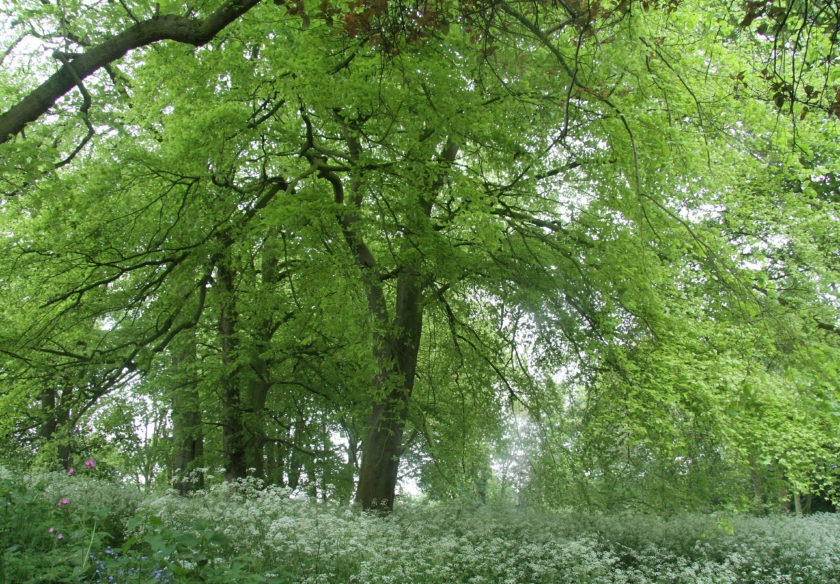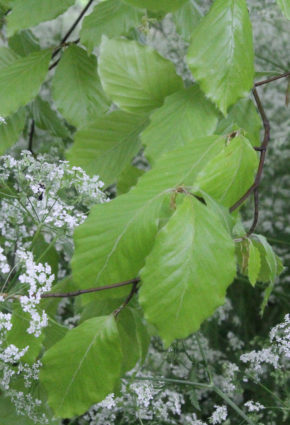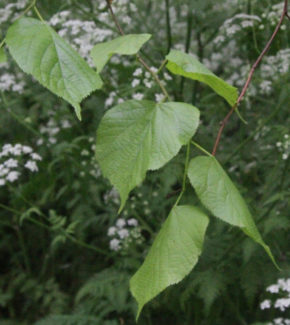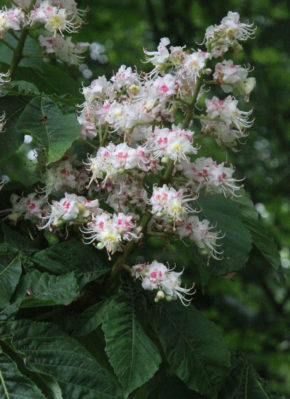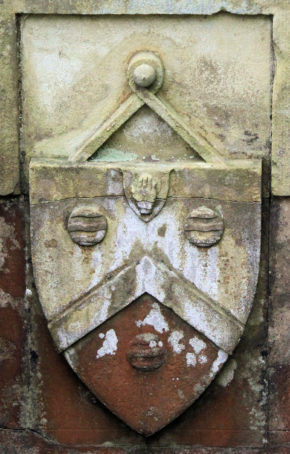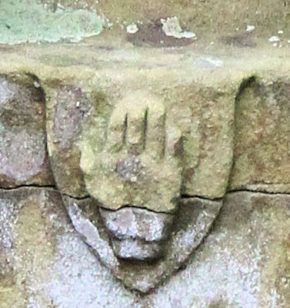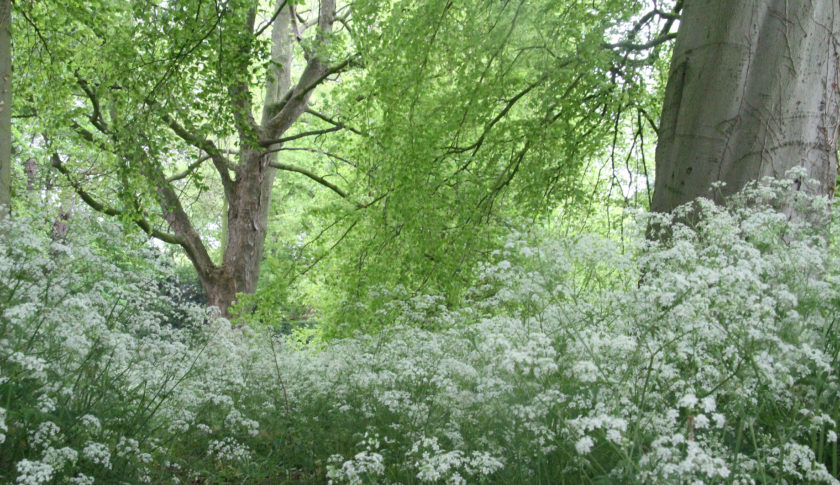
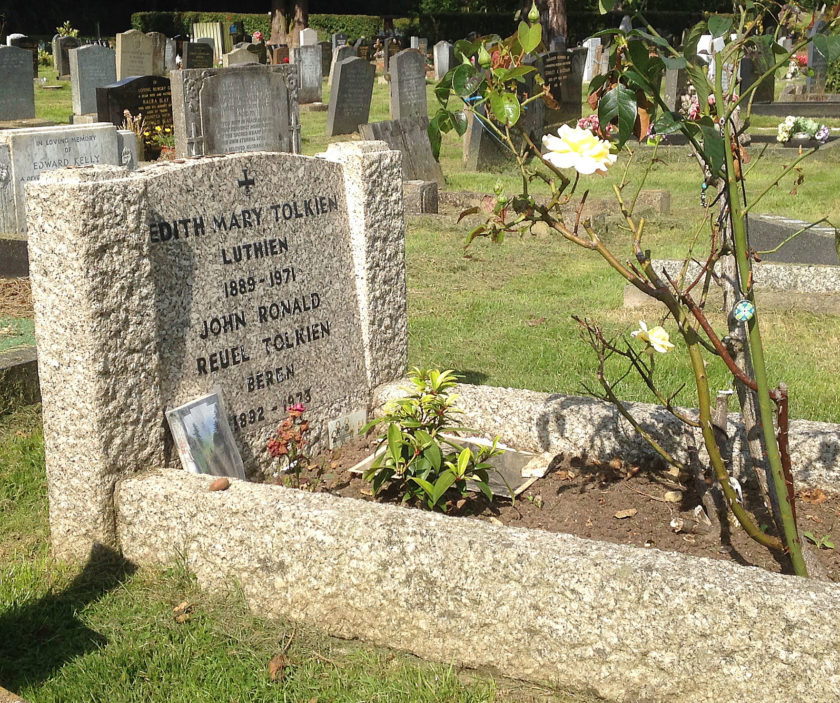
Edith’s dance is significant because this was the initial inspiration for ‘The Tale of Tinúviel’; which later evolved into the narrative ‘Of Beren and Lúthien’ in The Silmarillion. The importance of these fictional names is emphasised by the fact that they were placed on Tolkien’s gravestone after the death of their real-life equivalents. The dance is also quite topical this year, because many, but not all variants of their story are due to be published on 9 June between the covers of a single volume entitled: Beren and Lúthien.
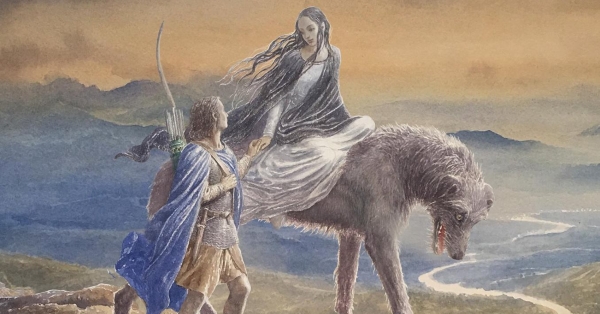
John Garth in his influential book, Tolkien and the Great War (2003) identified Dents Garth on the SE corner of the village as the most likely place for the dance. When researching the book Garth was only able to spend a single day on location visiting possible Tolkien venues. A more lengthy examination of local woodlands, which are accessible to the public reveals that most of these do not have an understorey of umbellifers. There is one of these in Frodingham, but the trees growing there are very young, so there may not have been any mature trees present in 1917. Roos bog is unsuitable, as it is incredibly damp, and there are virtually no umbellifers growing in the waterlogged conditions.
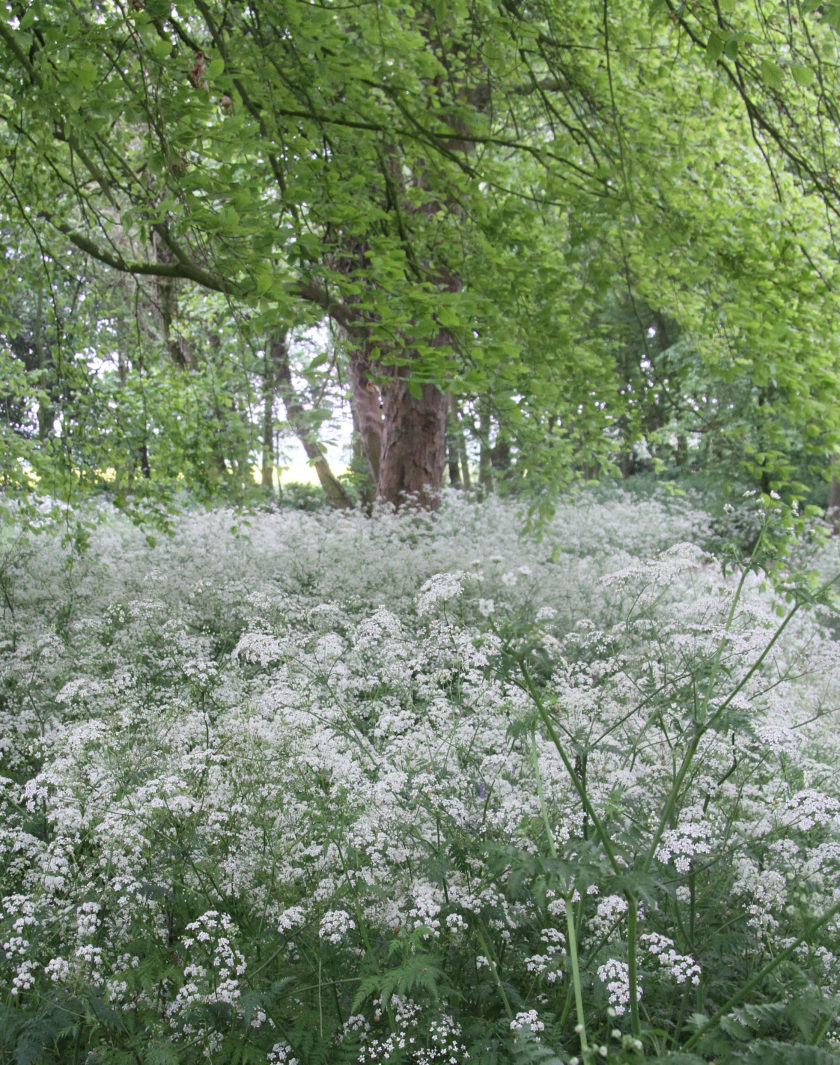
A more careful examination of the area around Dents Garth in Roos reveals that there are several features, which seem to have links to various Tolkien texts. The most important is the sheer quantity and beauty of the Cow Parsley, what Tolkien referred to a ‘hemlock’ in both the churchyard and adjacent woodland. Hemlock is a coniferous tree in the New World, so there is a possibility that some readers visualise the scene incorrectly. The following images almost all taken within the last few days illustrate the kind of scene and tree species witnessed by Tolkien, and included in his fictional encounter between Beren and Lúthien.
Dents Garth and Roos churchyard contain Beech, Lime (referred to poetically as the Linden-tree by Tolkien), Horse Chestnut, and all the other tree and plant species mentioned in the various versions of the encounter between Beren and Lúthien. The only exception is a mature Elm tree – Beren leans on a young Elm in the earliest surviving version of the text, but mature examples of this species were probably lost in the devastating effects of the Dutch Elm disease of the 1970s and 80s. A substantial sapling, probably growing from a sucker of one of the original trees may be found just south of the church car park to this day. However, in 2017 although it began to leaf and seed, it has since began to die back, because it too has succumbed to Dutch Elm disease. Several young Elm trees still appear to be thriving in the grounds of the nearby former Roos castle. How long they will survive is debatable. The continued presence of an active noisy Rookery in Dents Garth would seem to indicate the previous presence of Elms in the Dents Garth woodland, as traditionally this is the tree species in which Rooks prefer to nest. This evidence is bolstered by the nearest property to the church, which in Tolkien’s time, as now, is simply called “The Elms” with “Elm Farm” the adjacent property to the north.
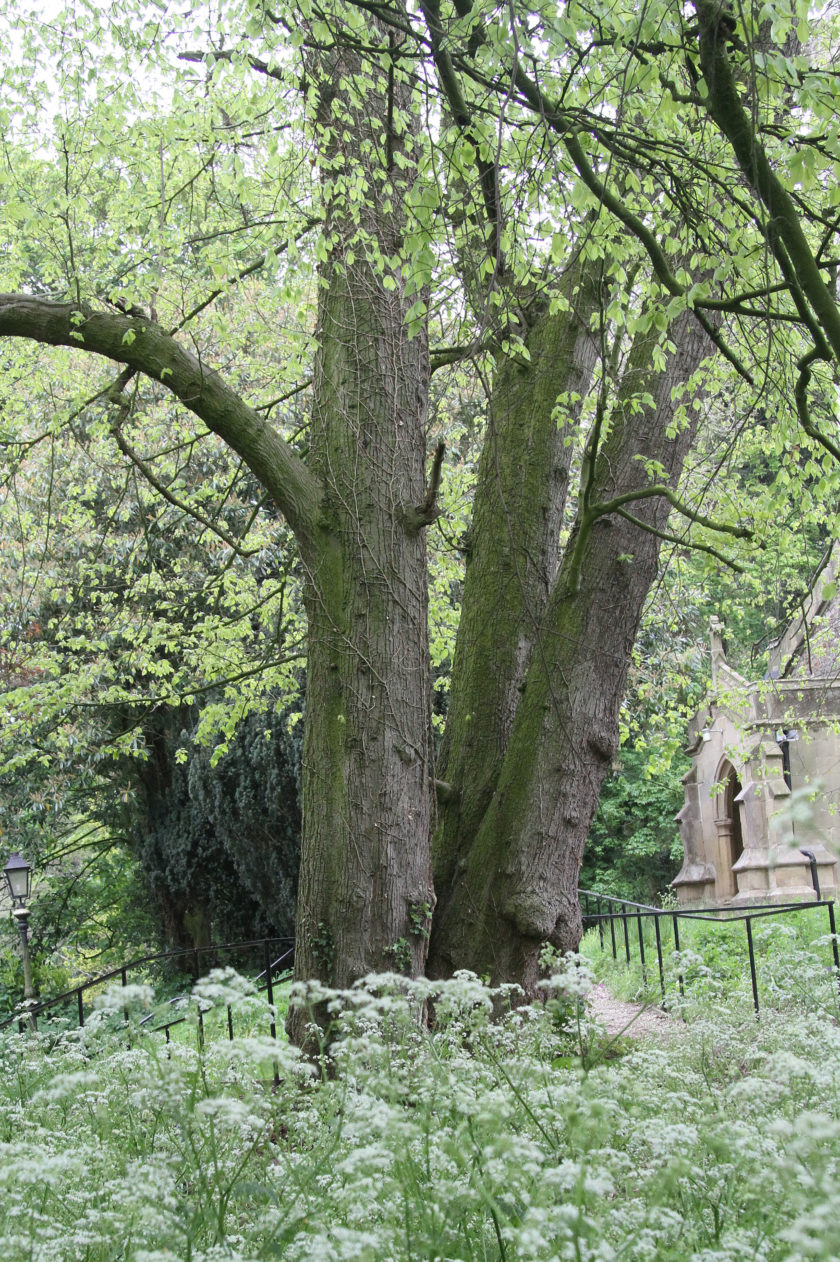
The nearest tree to the south-west corner of the church, between the church and the entrance in the southern exterior churchyard wall is rather striking: it has three trunks. In the earliest-surviving version of Tolkien’s story, Lúthien is imprisoned by her father Tinwelint (later Thingol) in Hírilorn, a mighty Beech tree: “so deeply cloven was her bole that it seemed as if three shafts sprang from the ground together and they were of like size, round and straight, and their grey rind was smooth as silk, unbroken by branch or twig for a very great height above men’s heads.” As John Garth remarked, when I mentioned the finding of this tree, the three-trunked tree “seems such a specific seemingly random detail” of the story, that the finding of such a tree actually in Roos near the genesis of the tale is suggestive. The tree in Roos churchyard, which would have been there in Tolkien’s time, has some similarities to his description, including the cloven bole, the three shafts of equal size, the grey bark, and branches above the height of men, although now there are also some new tiny lower twigs, and even a branch or two. The fairly smooth bark is now partly obscured by ivy stems, but crucially this tree is a Lime, or more poetically a Linden tree, not a Beech. The tree adjacent to this Lime tree is a Beech! Of course in the poem about Beren and Lúthien published in The Fellowship of the Ring, the original version of which dates back to around 1919, Tinúviel’s feet are described as a “light as leaf on linden tree”. The leaves of both the Beech and the Lime are at their freshest green when the Cow Parsley is in bloom.
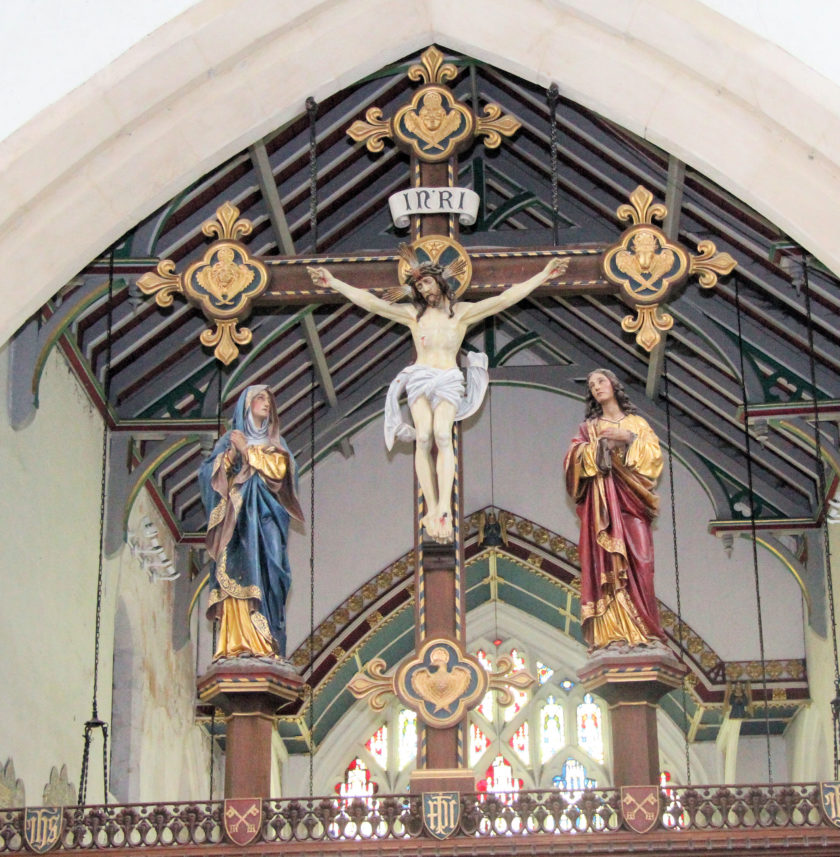
Tony Curtis, a calligraphic artist, spotted an item of high-quality calligraphy behind glass on one of the walls of the church. It post-dates Tolkien’s time in the area, but it is of interesting local historical value. This was chiefly a list of all the incumbents of the Roos diocese, but it also included the information that the original spelling of the village name was Ros, and that the name is unusual in the area as being of Celtic origin and means either marsh or moorland. After the Norman Conquest the name of the village was utilised by major landowners, so in c.1158 a Robert de Ros took the title of Baron of Helmsley. The editors of Parma Eldalamberon 11 examined the meaning of ros, and their suggested derivations include the Welsh rhôs, which meant ‘moor, heath or plain’; or the Breton word ros, which meant ‘hillock’, and the Irish word ros, which meant ‘promontory’ [p.6]. These latter definitions may have some significance because in notes about the conclusion of The Book of Lost Tales in the Faring Forth Tol Eressёa was to be “uprooted and dragged near to the Great Lands, nigh to the promontory of Rôs”, which was to be followed by the “Battle of Rôs” in which the Elves were to be defeated [BOLT p.283]. Christopher Tolkien proposed that Rôs may be Brittany, but the editors of Parma Eldalamberon postulated that “the promontory of Rôs may have been suggested to Tolkien by Roos” [p.6]. It could be argued that Roos, which is slightly higher than some of the immediately surrounding area, lies at the head of the promontory of Holderness, which dribbles away to the elongated sand spit of Spurn Point.
Tolkien clearly had a romantic experience in Roos, which remained with him all his life until the event was even obliquely memorialised on his own gravestone. In the more immediate aftermath of Edith’s dance he worked on his Goldogrin vocabularies and grammar and even invented a meaning for ‘ros’, with an exceedingly romantic flavour: “embrace”. (PE 11, p.66) However, this may have been an extremely temporary definition. It is known that in due course ‘ros’ evolved in the etymologies to be equivalent to “foam, spindthrift, [and] spray.”
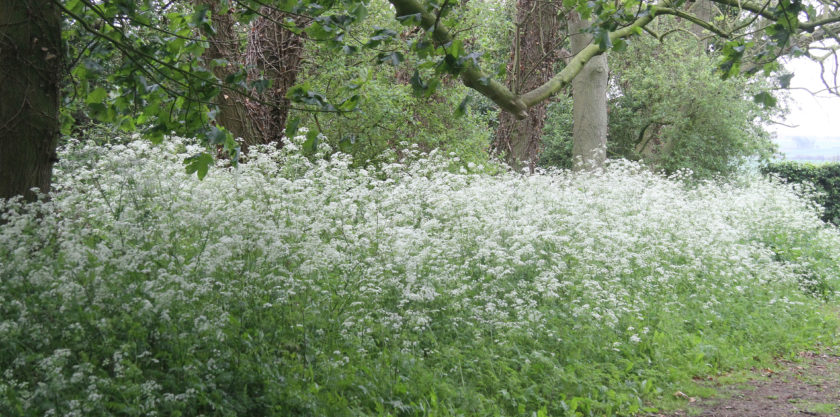
John Garth has kindly supplied another possible link to show Dents Garth may have been commemorated in Tolkien’s linguistic invention. Lúthien’s father’s realm was named Doriath and in the etymologies, published in The Lost Road, Doriath is also known as “Garthurian” meaning fenced realm [Lost Road, p.358]. However, it should also be pointed out that Garth is not a particularly rare Northern word, and Tolkien would have come across it many times before. In The Lord of the Rings garth is used on a couple of occasions by Treebeard. Towards the end of the narrative Treebeard renames the area around Isengard as “The Treegarth of Orthanc” [p.979], and earlier when singing of the entwives, their part of the song mentions spring returning to “garth and field” [477]. In Tolkien’s writing the word “garth” has positive connotations, as it seems Dents Garth did in Tolkien’s remembrance of his past life with Edith.
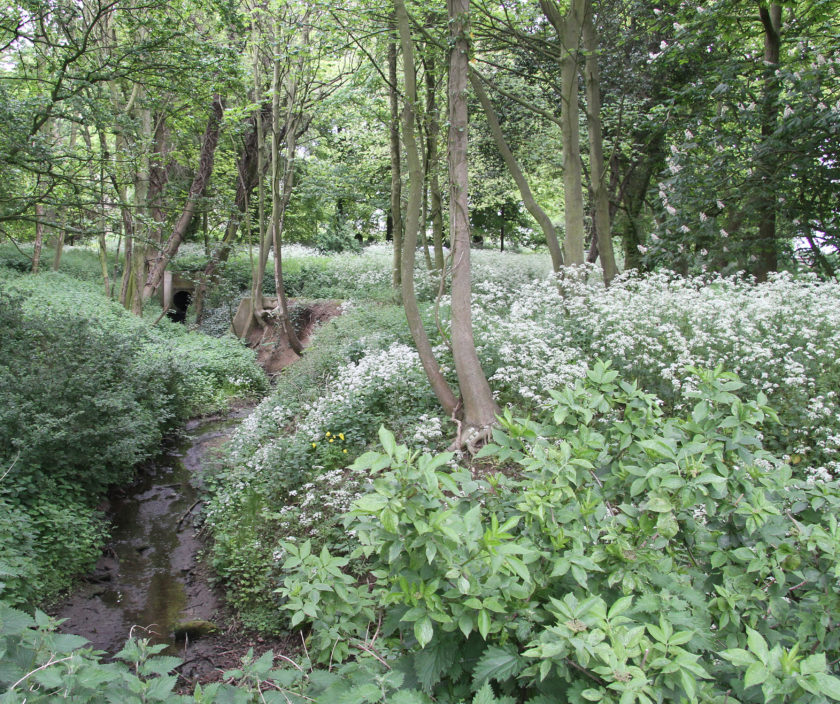
On the southern side of the car park to the church is a meagre unimpressive waterway heading south out of the village. This is very hard to see in the summer months as it is concealed by the heavy undergrowth. I have visited this area many times in the summer, but only became aware of its existence during a winter excursion. In Tolkien’s forest of Neldoreth in which the tree Hírilorn grows is a river called Esgalduin. By no stretch of the imagination could the tiny Roos Beck be classified as a river, but the hidden aspect of the beck may have more significance. Apparently, Roos Beck is visible at the North End of Roos (but I have never been able to locate it), and it emerges again south of the church, but for much of its course it is hidden and was until recently neglected as it passed through the bottom of residents’ gardens as it heads towards the church. It was only after torrential downpours in late June 2007 that the hidden Roos Beck caused severe flooding, and was cleaned out, and the course repaired. In Tolkien’s tale there was no tiny hidden stream, but the far more majestic river Esgalduin, which flowed through Neldoreth. The ‘esgal’ element in Esgalduin, means ‘screen’ or ‘hiding’, and Esgalduin actually translates as “River under veil” [Silm, p.358 & p.329], so as unlikely as it sounds Roos Beck may have been part of the “cauldron of soup” in the back of Tolkien’s mind when he created the far more magical River Esgalduin.
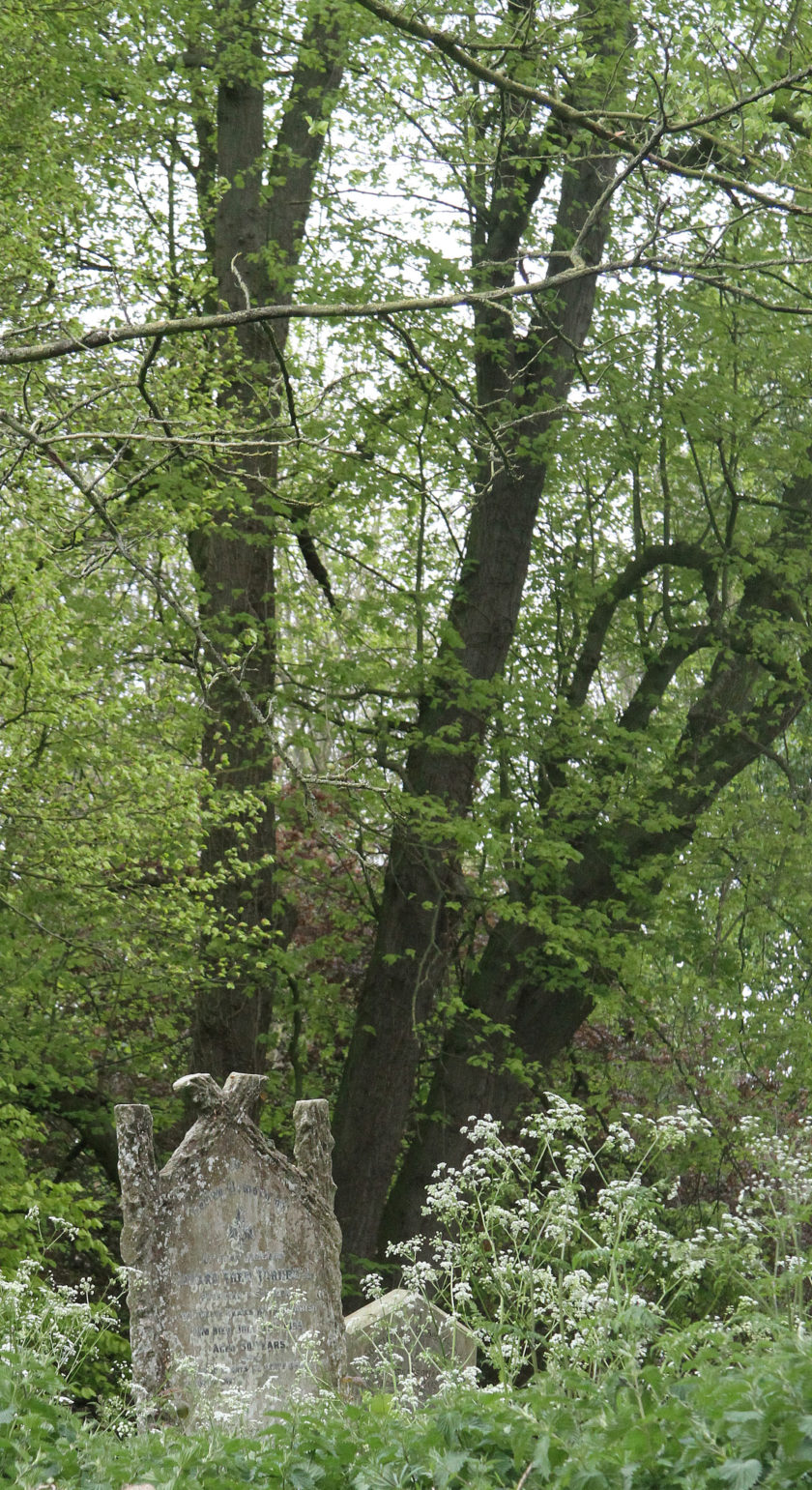
The final item in Roos churchyard, which seems to have an echo in the evolution of Tolkien’s subsequent writing in the Lúthien story is an eye-catching gravestone along the southern perimeter of the churchyard path. This is the least convincing detail and is almost certainly coincidental, but it cannot pass without mention. It is virtually the only gravestone dating before Tolkien’s time which may be easily read from the path. The sides take the form of ridged tree-trunks, and the apex is formed from the conjunction of two branches. The design is likely to have attracted Tolkien, who had a lifelong interest in trees. This is the memorial to a Victorian physician and surgeon, Edward THEW Turnbull [my emphasis]. Thew is a very unusual Christian name, but may have some personal relevance to the Turnbull family, and be used in a similar manner as Reuel was in the Tolkien family. Although in the earliest versions of The Book of Lost Tales, the character who later evolved into Sauron was a cat named Tevildo; before Sauron was eventually settled on as a name for this malignant Maia, the names Túvo, then Tû were utilised. Shortly afterwards Tolkien decided on the longer-lasting Thû, which was used for a considerable period in the 1920s. Was this name originally suggested to Tolkien when he was still wishing to tie in his personal reminiscences of time spent in Roos with his emerging mythology? Probably not, but still the coincidence is worth highlighting. Once the memory of Roos became more distant Thû was dropped in favour of the now far more well-known name of Sauron. However, because it is possible to see the development of Thû as a natural linguistic progression from Tûvo and Tû, this is almost certainly the item in Roos churchyard with possible Tolkien links, which is purely coincidental.
The impressive understory of Cow Parsley, the three-trunked tree, the heraldic hand, the former proliferation of elm trees, a single Beech tree next to a “Linden tree”, and the particular appearance of Roos Beck, which are all within fifty metres of Dents Garth may seem insignificant or coincidental in themselves, but taken in conjunction with his positive use of the word garth, and surrounded by the cow parsley, or the “hemlocks” that Tolkien wrote about, Dents Garth does seem to be the most likely venue for the location for Edith’s dance.
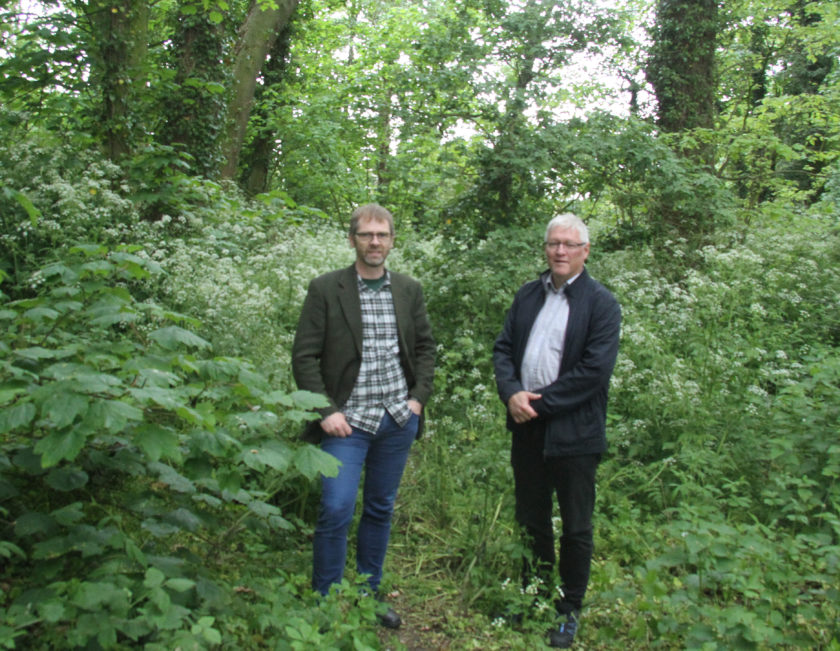
On Saturday, 13th May 2017, two Norwegian Tolkien scholars, two Tolkien Society members from Liverpool and Birmingham respectively, and 2 interlopers from East Yorkshire were guided around all the East Yorkshire Tolkien locations to see where Tolkien went and follow in his footsteps as far as is possible. I believe that they were most impressed by the beauty of the Cow Parsley under the trees in Roos churchyard, and they could understand why it impressed Tolkien so much. Unfortunately, this is not a universal view, as a new gardener had to be restrained from cutting back the Cow Parsley until after our visit, and it seems unlikely that it will look as pristine as we saw it, as very soon much of it will be trimmed back in the churchyard. Many people who are not aware of the Tolkien connection, simply see the Cow Parsley as “untidy”, especially when a burial or wedding is pending. If the Tolkien connection was more widely known in the local community then perhaps more of the beauty would be allowed to remain for a lengthier period every year.
Another visit to Roos in late June as part of a coach trip has been organised. So, if you are interested in a guided visit to Roos in the centenary year, and all the other locations in East Yorkshire (but without the understory of Cow Parsley), you may find more details here.
